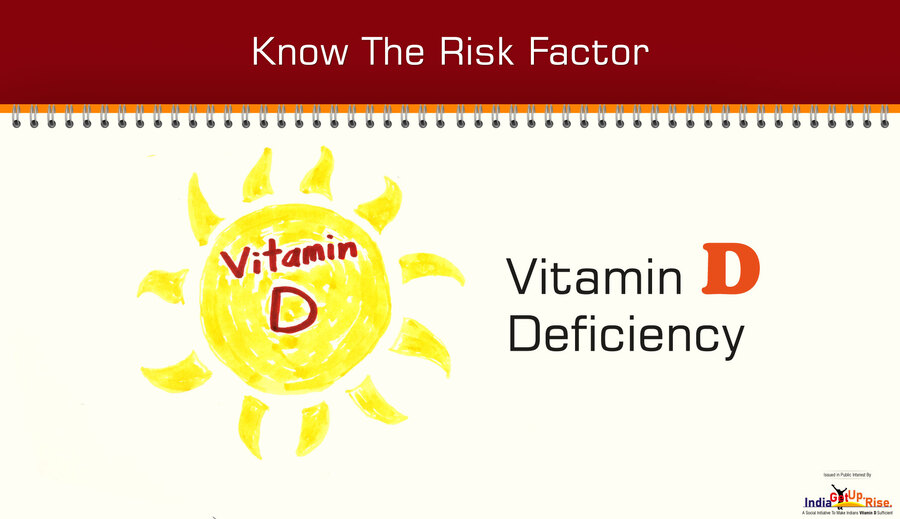- The increasing prevalence of Vitamin D deficiency is public health issue now (Biesalski HK, 2018) and it is a need now to recognize the risk factors for developing Vitamin D deficiency and act in a preventive manner.
- There is a very strong association between vitamin D deficiency and obesity. A meta-analysis that included data from 13 209 individuals reported that obese individuals are 3.43 times more prone to be vitamin D deficient as compared to non-obese individuals. (Yao Y, 2015)
- Vitamin D deficiency is common in older people (MacLaughlin J, 1985).The Irish Longitudinal Study on Aging (TILDA) was prospective study of community dwelling adults aged 50 years and older in Ireland and includes 5382 with vitamin D measurement which proved the association of decreased vitamin D in elderly. It showed that Vitamin D deficiency was prevalent in individuals of age >55 years by about 21.3 % and the most common was seen in those aged> 80 years. (Laird E, 2020)
- Being hospitalized is another common association with the development of Vitamin D deficiency. A case-control study of 445 institutionalized, osteoporotic women from nine countries (Australia, Belgium, France, Germany, Hungary, Italy, Poland, Spain and UK) found that, in women not taking vitamin D supplements, the serum 25(OH)D concentration was lower in institutionalized women. (Bruyere O, 2009)
- Individuals with kidney and liver disease (like Non Alcoholic Fatty Liver Disease) are more prone to develop vitamin D deficiency (Kennel, 2010) (Eliades M, 2013 ).People who are lactose intolerant, have an allergy to dairy products or strict vegetarians often develop Vitamin D deficiency as the sources for natural vitamin D synthesis in their body become deficient with time. Dark skinned individuals or people with limited exposure to sunlight may also be at higher risk due to decreased melanin in skin which is required for Vitamin D synthesis or decrease exposure to sunlight which is required to convert inactive to active Vitamin D. (Michael F. Holick, 2011) (Martin CA, 2016 )
- To conclude obesity, ageing, prolonged hospitalization, comorbidities like kidney and liver diseases, people of color, lesser exposure to sunlight, allergy with dairy products or strict vegetarians are individuals who are more at risk to develop Vitamin D deficiency. Such individuals should keep monitoring their Vitamin D levels, take appropriate measures to prevent or treat such deficiency by consulting a health care professional and discussing about Vitamin D supplementation.
Please always ensure to check with your Doctor / Healthcare / GP before starting with any new medication or therapy.
For any queries, feel free to reach us on our website, facebook, twitter, instagram, LinkedIn
Take the free Vitamin D Test – Click here: Vitamin D Self Examination
References
Biesalski HK, B. R. (2018). Vitamin D deficiency: A public health issue in High and low incoume countries or just hype? World Review of Nutrition and Dietetics , 118, 206-214.
Bruyere O, D. C. (2009). Highest prevalence of vitamin D inadequacy in institutionalized women compared with noninstitutionalized women: a case-control study. Womens Health(Lond), 5, 49–54.
Eliades M, S. E. (2013 ). Meta-analysis: vitamin D and non-alcoholic fatty liver disease. . Aliment Pharmacol Ther. , 38(3):246-54.
Kennel, K. A. (2010). Vitamin D deficiency in adults: when to test and how to treat. Mayo Clinic proceedings, 85(8), 752–758.
Laird E, K. R. (2020). Vitamin deficiency in Ireland – implications for COVID-19 Results from the Irish longitudinal study on ageing. Retrieved from https://tilda.tcd.ie/publications/reports/
MacLaughlin J, H. M. (1985). Aging decreases the capacity of human skin to produce vitamin D3. Journla of Clinical Investigation , 76, 1536–1538.
Martin CA, G. U. (2016 ). The prevalence of vitamin D deficiency among dark-skinned populations according to their stage of migration and region of birth: A meta-analysis. . Nutrition, 32(1):21-32.
Michael F. Holick, N. C.-F. (2011). Evaluation, Treatment, and Prevention of Vitamin D Deficiency: an Endocrine Society Clinical Practice Guideline. The Journal of Clinical Endocrinology & Metabolism, 1911–1930.
Yao Y, Z. L. (2015). A meta-analysis of the relationship between vitamin D deficiency and obesity. International Journal of Clinical and Experimental Medicine, 8, 14 977–14 984.



Pingback: Are You Getting Enought Vitamin D in Monsoon? - India Get Up Rise
Pingback: Vitamin D Deficiency in Older Adults During Monsoon
Pingback: Vitamin D: The Essential Nutrient for Optimal Health